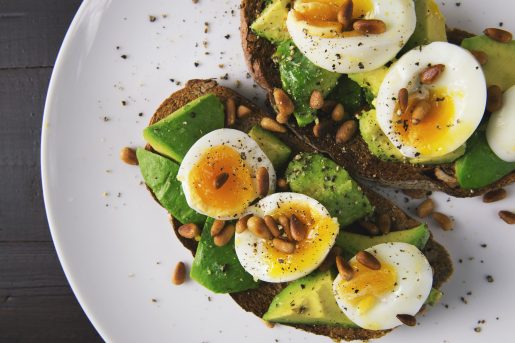Savor brunch nutritiously
Brunch is a fun occasion to get together with family and friends while enjoying a delicious meal. However, brunch food and beverages often have added calories and fat. While you can indulge in these decadent meals in moderation, there are ways to add nutrients to your meal while eliminating unnecessary calories.
“You have to remember that you’re not combining the quantity of breakfast and lunch,” said Dr. Luis Rustveld, registered dietitian and assistant professor of family and community medicine at Baylor. “You’re not supposed to eat more because you skipped breakfast. The idea is that you get breakfast and lunch items, combining them into a balanced meal.”
People often consume increased saturated fats during brunch, which can result in a 2,000-calorie meal. Avoid overeating by eating something small before brunch, such as fruit or yogurt. If weight loss is the goal, do not eat brunch foods unless you prepare the meal at home and can control portion sizes. It is crucial to pay attention to portions, whether or not you want to lose weight. Rustveld explains how to make popular brunch items more nutritious and less caloric.
 Eggs
Eggs
Eggs offer a lot of protein, but depending on how they are prepared, egg dishes may contain additional saturated fats and calories. Eggs benedict contains extra calories and saturated fat from the added hollandaise sauce, so opt for poached eggs or scrambled eggs without the extra fat from sauces. Eat one to two eggs with egg white mixed in to cut down cholesterol. The American Heart Association recommends eating no more than three whole eggs in a week, but you can eat egg whites everyday. People with elevated cholesterol should try to limit whole egg consumption.
Bacon and sausage
While bacon should be consumed in moderation, Rustveld says you can eat it twice a week. Try center cut bacon, which is usually leaner. Canadian bacon also is naturally lean. Although people think turkey bacon cuts fat and calories, it is not always the leanest option.
Sausage should not exceed 3 grams of fat per ounce, so choose leaner options or alternatives, such as turkey or vegetarian sausage.
Pancakes and waffles
Buckwheat or whole-grain pancakes and waffles offer more fiber and protein than traditional options. Avoid added sweeteners, such as syrup or powdered sugar, and fats like butter since it contains saturated fat. Top pancakes or waffles with fresh fruit, nuts, almond butter or peanut butter.
Coffee
Drink coffee without adding excess sugar. Enjoy a latte, espresso or a cup of black coffee with a small amount of sugar or your favorite sweetener. If you order coffee out, ask for something like a sugar-free vanilla latte rather than a regular vanilla latte to eliminate sugars. You can potentially add 400 calories on top of your brunch by adding too much sugar to your coffee.
Juice
Skip out on juices since they are essentially sugar and water. Rustveld recommends eating fresh fruit for nutrients instead.
Alcohol
If you have an alcoholic beverage, be mindful of the amount you drink because it adds extra, empty calories to your meal. Instead of having a mimosa with sugary orange juice, order a bellini made with fresh fruit.
Healthier alternatives
For a balanced, satisfying meal, eat a whole grain with a protein source, such as a whole-grain bagel with smoked salmon and light cheese instead of cream cheese (which contains saturated fats). Avocado toast on whole-grain bread, topped with a poached egg, tomato and seasoning is another high-protein, tasty brunch meal.
“You’re consuming a lot of saturated fats in one sitting, so instead of eating a lot of butter or oils, think of adding avocado or nuts, which are better kinds of fats to add to your meal as opposed to saturated fats,” Rustveld said.
Learn about Baylor Family Medicine services.
By Homa Shalchi



Thank you! Timely tip for me!